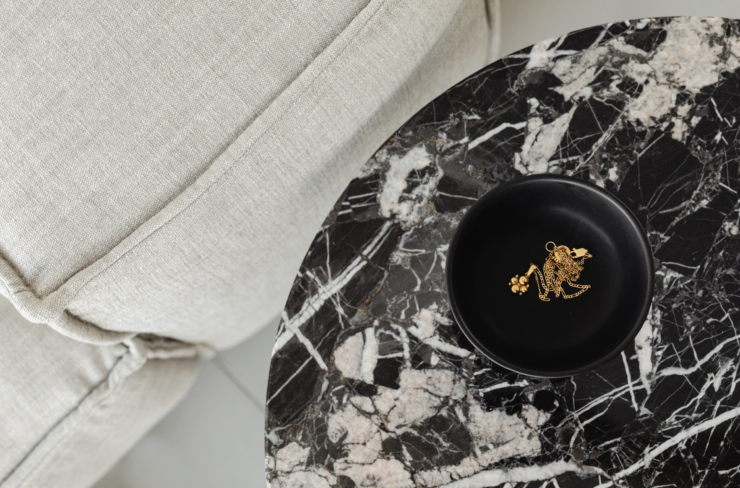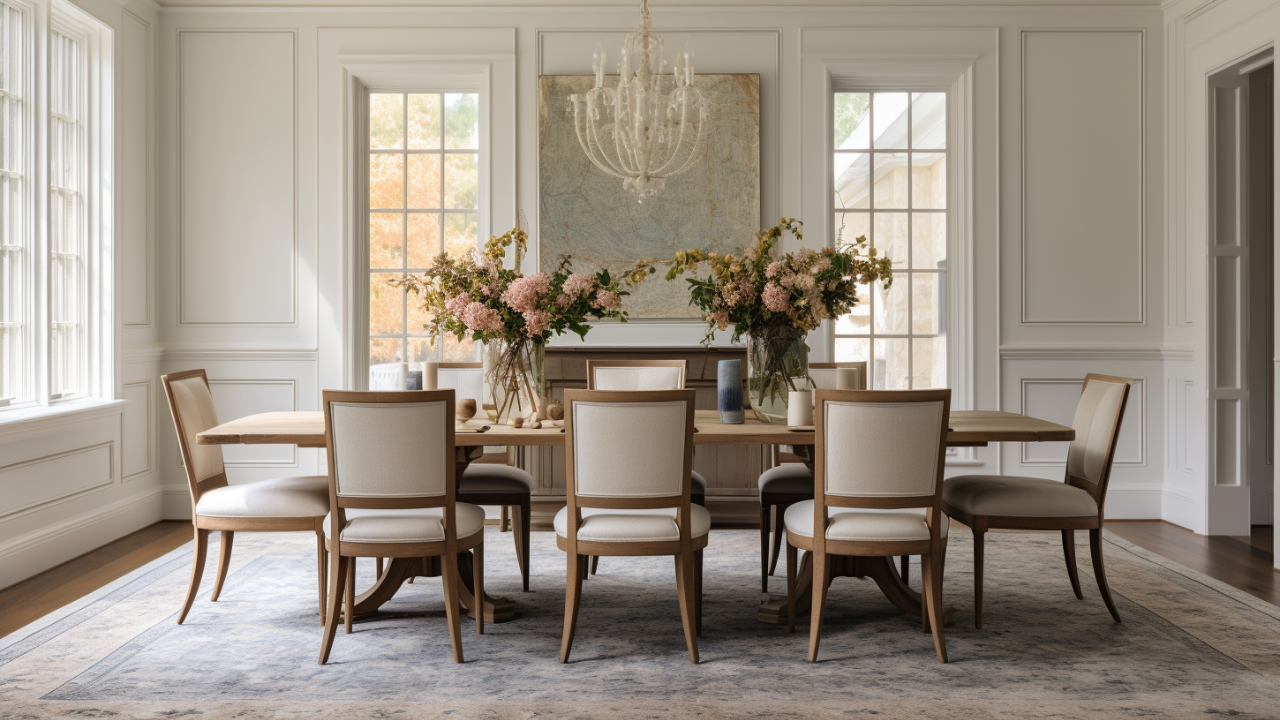Marketing

In-room visualizer: This feature will allow the client to select a room scene of choice from predetermined options or upload a room scene of their own. They will also have access to the full STARK assortment to visualize any rug or carpet within the space, change the orientation, change the size of the rug, and adjust the binding.

Jensen Outdoor, a leading name in luxury outdoor wood furniture, announces the launch of their game-changing video series on YouTube, “Outdoor Confidential.” Dive into the secrets of luxury exterior design, with the inaugural episode providing an unparalleled behind-the-scenes view of Sunbrella®, the globally acclaimed designer and manufacturer of luxury outdoor fabrics.

A new cadre of consumers are emerging: the “zeros.”
These shoppers have zero boundaries, zero interest in middle-market goods, zero loyalty and zero patience, according to a report from global consulting firm McKinsey published in its McKinsey Quarterly journal.
But brands, retailers and designers who understand their motivations and priorities could cultivate these consumers, adding zeros to their bottom line.
Let’s take a look at their traits, one by one:
Zero boundaries
Consumers continue to favor an omnichannel retail model, moving frequently (and hopefully seamlessly) between in-store and online shopping. When they choose to shop through which channel depends on a host of factors, including what they’re buying, their mood, how much time they have, and if they happen to be near a store or cozily ensconced on their sofa when they remember they need something. McKinsey notes that “even grocery, once a stubbornly store-based category, is becoming solidly omnichannel, with nearly 40% of U.S. consumers saying they do at least some of their grocery shopping online.”
Overall, about three-quarters of consumers still prefer to purchase furniture in-store, but that’s driven by older consumers and a desire among all ages to feel/lie down on big-ticket, comfort-focused items like sofas and mattresses, according to new Consumer Insights Now research. (Consumer Insights Now research is conducted on behalf of Decor News Now and its sister publications to provide actionable information for furniture buyers ahead of the High Point Market each fall and spring.)
But if you dig into the CIN numbers, you’ll see that younger shoppers are more likely to buy all categories of furniture online, and home furnishings shoppers of all ages more evenly split their shopping between e-commerce and brick-and-mortar stores when they are buying smaller items like rugs, lighting and decorative accessories.
Today, omnichannel retail extends beyond the typical brick-and-mortar/e-commerce dichotomy and into shopping via social media and relying on influencers and celebrities for product information, McKinsey notes. CIN research shows more than one in 10 shoppers relies on social media posts from influencers/celebrities for product guidance. That figure doubles to two in 10 shoppers when considering just adult Gen Z shoppers (ages 18-26) — and they are helping to define the future of retail.
Zero interest in the middle
We’ve been seeing a bifurcation across consumer product markets for some time, with consumers, as McKinsey puts it, “either scrimping or splurging.” The report notes that the total share of consumer dollars spent on midpriced goods and services has dropped nearly 10% in the past five years. The trend is being accelerated, in part, by economic realities. Consumers on the bottom rungs of the economic ladder are getting hit harder by inflation, with wages that aren’t keeping up, and are looking for bargains. Consumers on the upper rungs often want the quality, durability and prestige that can come with higher-priced goods.
Concerningly, it appears that more consumers may be in that first group. McKinsey notes that last spring, 80% of U.S. consumers said they were “trading down to lower-priced options.”
To help cover the costs of furniture that might be immediately out of reach, about one in four shoppers plans to use financing options (such as personal or retailer-branded credit cards) that allow for monthly installment payments to pay for big-ticket furniture like dining tables, sofas, recliners and mattresses, CIN research found. And about four in 10 are more likely to buy from a store that offers financing options — and that’s a way retailers can step shoppers up to higher-end goods.
One group that has money to spend is older consumers with disposable incomes. I wrote about these vibrant mature consumers recently.
Zero loyalty
There was a time when one way many families identified themselves was by the car brand they favored. There were Buick buyers and committed Cadillac owners. (Truth be told, I have a Honda habit.) In some ways, the same was true of furniture. My family was a fan of Ethan Allen, and I still have inherited pieces from that brand in my home.
But brand loyalty is waning. “About half of consumers reported switching brands in 2022, compared with only one-third in 2020,” McKinsey notes. “What’s more, about 90% said they’ll keep switching.” That doesn’t mean companies can skimp on brand-building efforts, but it does mean they can’t rest on their reputation. Instead, brands, retailers and even designers need to continually innovate and offer new products and services that meet consumers’ evolving needs and give them a reason to return.
Zero patience
Consumers want what they want — and they want it now. We see this most clearly when it comes to free standard shipping, an expectation driven by Amazon’s next-day and same-day delivery service, as well as buy online, pick up in-store services offered by many retailers. “A plurality of customers today report that three-day shipping is the slowest they’ll tolerate before looking to other retailers,” McKinsey notes.
Consumers shopping for larger furniture pieces are a little more patient, CIN research shows. For instance, 37% of those in the market for dining room furniture are willing to wait two to three weeks for their purchase to arrive. But more than one in 10 expects delivery in less than a week, and two in 10 want their furniture in a week. The expectations are similar when it comes to delivery of reclining chairs, according to CIN.
Thankfully, supply chains once bottlenecked by pandemic closures have returned to almost normal. Bringing production back to North America is also helping many brands deliver orders more quickly to both retailers and consumers. Such improvements are helping designers better meet the needs of their clients, too. Some designers are also offering smaller, preset design packages that allow clients to enjoy a speedier makeover of a room or two.
These zero consumers don’t have to be thought of negatively. Success is just a matter of calculating how you can best meet their needs.

Late last week, RH released its second-quarter financial results, which included a 19% drop in revenue compared with the second quarter of last year. Even while giving its annual revenue guidance the tiniest of bumps — now estimated at $3.04 billion to $3.1 billion from a prior forecast of $3 billion to $3.1 billion — the company noted the difficulties that lie ahead.

We’re also seeing a generational shift in how people view shopping and buying. Why is this happening? Because the older generations were accumulators and the younger generations, well, not so much. we have a generation of accumulators shedding their belongings and not restocking. And we have younger generations who are less interested in shopping as sport and more worried about the environmental impact of their purchases. Oh, and they have relatively fewer financial resources than some previous generations at the same point in their lives.

With prices rising the past couple of years across virtually every category of goods and services, consumers are tired of paying more and more for the same thing — or, in the case of shrinkflation, paying the same amount for less product.
That makes receiving a small, unexpected gift from a company especially delightful right now.








